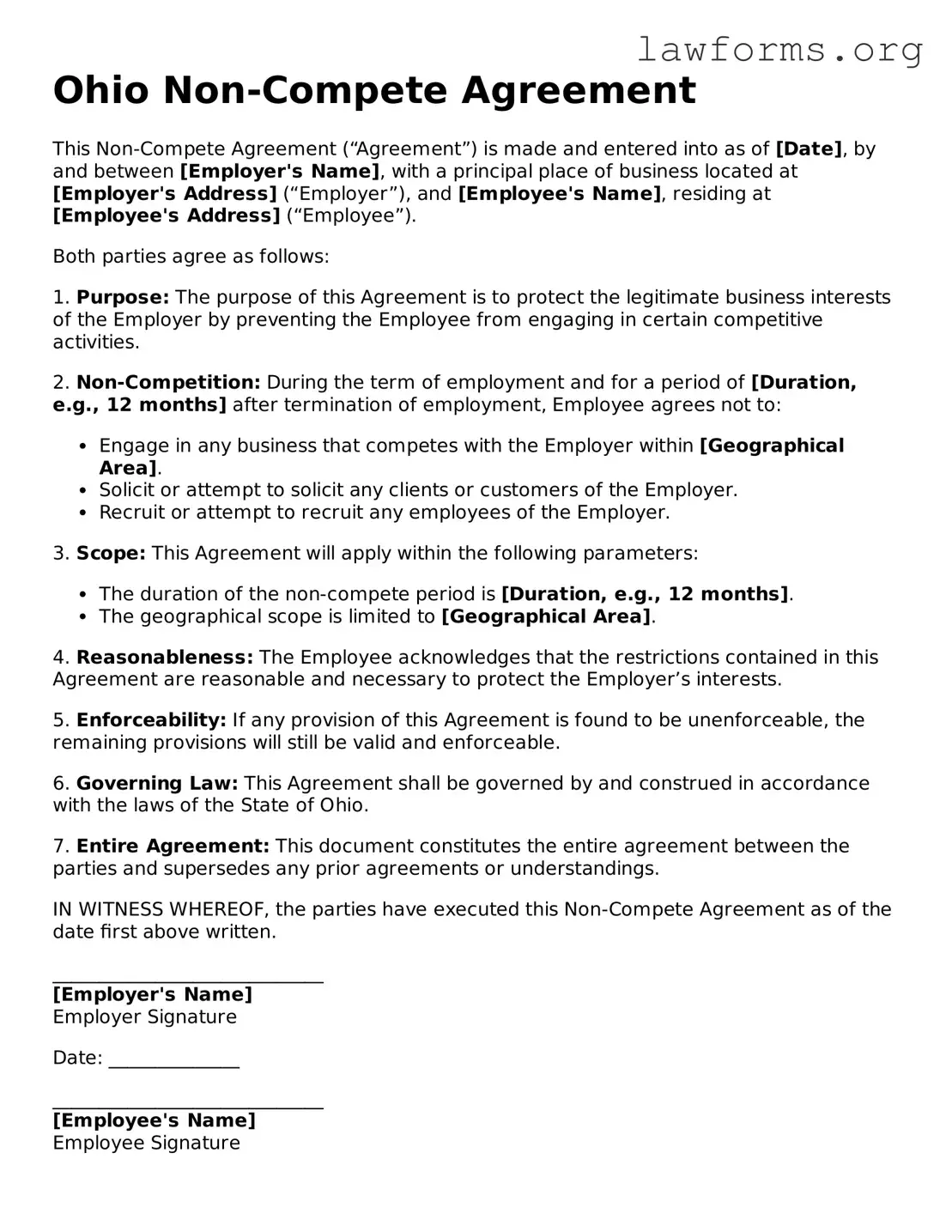Ohio Non-Compete Agreement
This Non-Compete Agreement (“Agreement”) is made and entered into as of [Date], by and between [Employer's Name], with a principal place of business located at [Employer's Address] (“Employer”), and [Employee's Name], residing at [Employee's Address] (“Employee”).
Both parties agree as follows:
1. Purpose: The purpose of this Agreement is to protect the legitimate business interests of the Employer by preventing the Employee from engaging in certain competitive activities.
2. Non-Competition: During the term of employment and for a period of [Duration, e.g., 12 months] after termination of employment, Employee agrees not to:
- Engage in any business that competes with the Employer within [Geographical Area].
- Solicit or attempt to solicit any clients or customers of the Employer.
- Recruit or attempt to recruit any employees of the Employer.
3. Scope: This Agreement will apply within the following parameters:
- The duration of the non-compete period is [Duration, e.g., 12 months].
- The geographical scope is limited to [Geographical Area].
4. Reasonableness: The Employee acknowledges that the restrictions contained in this Agreement are reasonable and necessary to protect the Employer’s interests.
5. Enforceability: If any provision of this Agreement is found to be unenforceable, the remaining provisions will still be valid and enforceable.
6. Governing Law: This Agreement shall be governed by and construed in accordance with the laws of the State of Ohio.
7. Entire Agreement: This document constitutes the entire agreement between the parties and supersedes any prior agreements or understandings.
IN WITNESS WHEREOF, the parties have executed this Non-Compete Agreement as of the date first above written.
_____________________________
[Employer's Name]
Employer Signature
Date: ______________
_____________________________
[Employee's Name]
Employee Signature
Date: ______________
